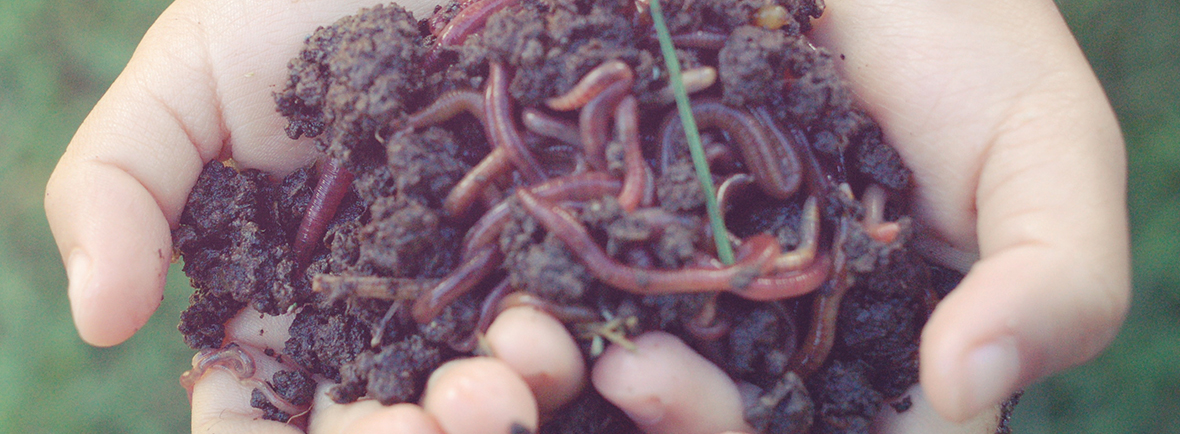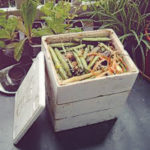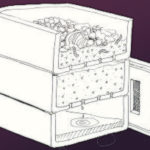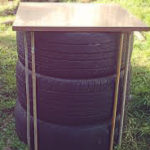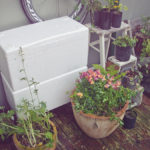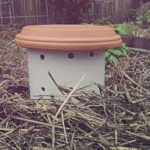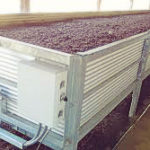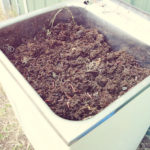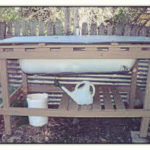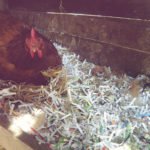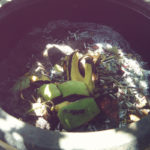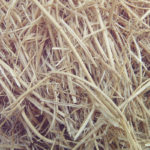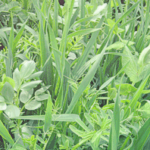Worms, worms, worms!
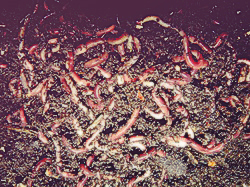 One day while teaching a class of pre-schoolers ages 4-5, I took in some compost worms from my garden. I began the session by telling them that I had my ‘friends’ with me, then slowly unveiled the wriggling creatures. The children were fascinated! Their reactions ranged from wanting to pick them up to ‘ooo yuk’. The theme continued of how these wonderful little animals with no eyes, ears or legs could help us quietly in the garden and the children agreed that they were indeed our friends and should be looked after carefully. Unfortunately I didn’t heed my own advice and when the session was finished, I fed the worms to the chickens kept by the children. The chooks eagerly gobbled them up and I was pleased that the session had gone rather well until one little girl burst into tears and cried ‘but they were our friends’! Aaah such is the difficulty of life for our young ones, coming to terms with the seeming cruelty of nature.
One day while teaching a class of pre-schoolers ages 4-5, I took in some compost worms from my garden. I began the session by telling them that I had my ‘friends’ with me, then slowly unveiled the wriggling creatures. The children were fascinated! Their reactions ranged from wanting to pick them up to ‘ooo yuk’. The theme continued of how these wonderful little animals with no eyes, ears or legs could help us quietly in the garden and the children agreed that they were indeed our friends and should be looked after carefully. Unfortunately I didn’t heed my own advice and when the session was finished, I fed the worms to the chickens kept by the children. The chooks eagerly gobbled them up and I was pleased that the session had gone rather well until one little girl burst into tears and cried ‘but they were our friends’! Aaah such is the difficulty of life for our young ones, coming to terms with the seeming cruelty of nature.
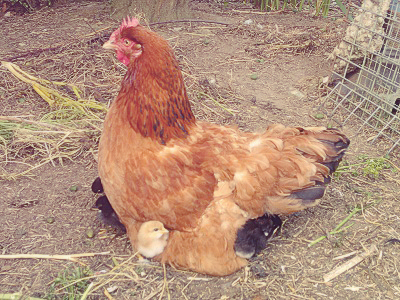
Harnessing the energy of some wonderful creatures can create a win-win situation, and looking after them can enable us to reap some wonderful benefits. Worms are without doubt heroes of the soil and truly great recyclers. So let’s take a look at how we can look after our wonderful friends
Worm farms – what are they?
Worms produce vermicast, or worm castings and a liquid often called worm juice or tea. Both are rich in nutrients and make ideal natural fertilizers to improve the health of the plants in your garden.
How can I set up a worm farm?
There are some very basic rules to follow, and it’s important to observe your worm farm and make changes if needed. Worms are living creatures and do need to be looked after if they are going to be healthy and do their important work!
- Balance of ingredients – just like us, worms need a balanced diet. Feed them a variety – they like food scraps, green garden waste, coffee grounds, paper products and manures.
- Worms will eat most things, but don’t feed them onions, meat or citrus in a closed worm farm.
- If you have a raised worm farm, you must provide everything for your worms. If the worms have contact with the soil, they can escape and find food elsewhere. If not, they will die if they don’t have food and moisture.
- How much food you give your worms will depend on how many worms are in your farm and the daily temperature. Worms like a soil temp of about 20 to 25°C. If it is too hot or too cold they will slow down and eat less.
- Worms are seasonal creatures – place your worm farm in morning sun during winter and then move into a shaded spot in summer.
- They need darkness and moisture, but don’t like it too wet. Ensure that excess water can drain freely from the soil. If you are using a raised worm farm, keep the tap open so water isn’t allowed to accumulate. This will lessen the possibility of mozzies breeding too.
- Worms can’t move in dry soil and can’t live if it’s too dry – if they are not there they won’t be eating your waste.
- Worms have very tiny mouths – the size of the waste you give them will determine how quickly they eat your scraps, paper, weeds etc. The smaller the waste, the quicker they can chomp their way through it!
- Some people flood their worm farm from the top with water until fresh worm juice is running out the bottom hole into your bucket. This will give you a regular supply of worm juice to spray and water onto your garden. But don’t leave it too wet or the worms will drown!
- Don’t overfeed! If the worms can’t eat it all, food scraps will start to smell bad. If this happens, get a small garden tool or stick, and scratch up the container you are feeding into, add a bit more soil and handful of dolomite lime and do not feed for a few days or even a week.
- Worms need some grit, which they use in their gizzard, to grind the food up. This can be provided by adding some soil or potting mix on top of the farm.
- Keep the surface covered – you can use a piece of hessian, old towel or special worm blanket. This is to keep the surface dark & moist.
- Some people sprinkle a handful of dolomite lime once a month to keep the farm fresh, but I find this is only if the worms are not very active and the farm is a bit smelly.
- Worms find their own castings poisonous and will die if that’s all they have to eat.
And if you follow all of this and care for your worms, you will receive MILLIONS OF WORMS, WONDERFUL CASTINGS AND NUTRITIOUS WORM JUICE!
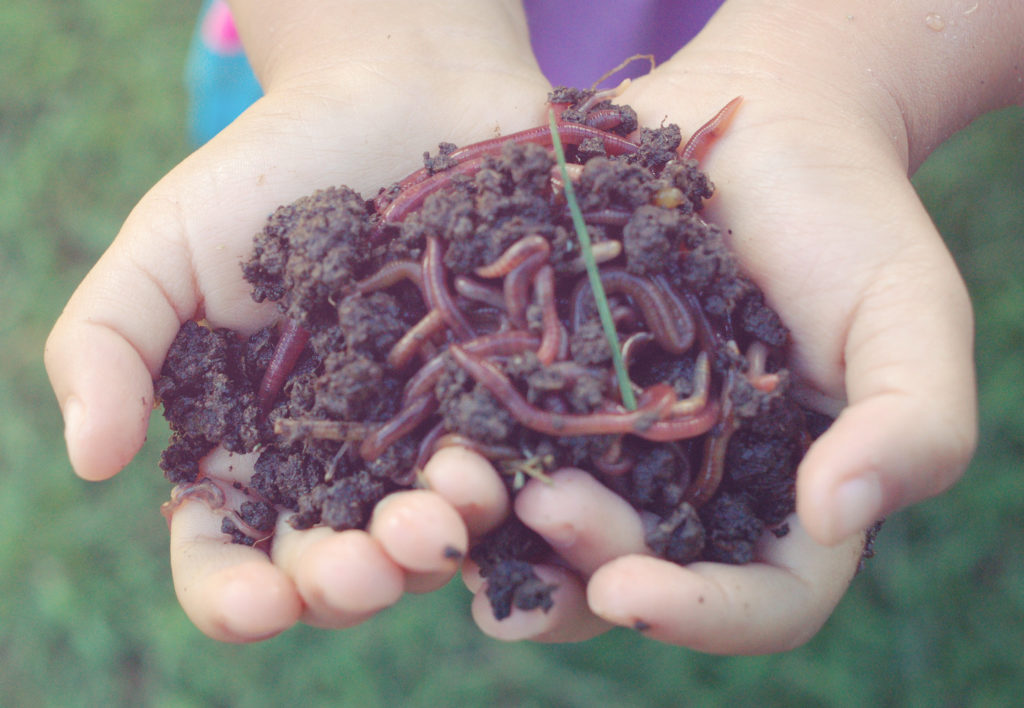
AND TO FINISH THE BLOG HERE ARE SOME AMAZING WORM FACTS!
- 1000 worms can munch their way through 10 tonnes of green waste a year, and produce fabulous rich vermicompost (worm poo) at the end!
- Earthworms breathe through their skin and although an earthworm looks as simple as it is, it is a complex creature with a fully functional circulatory system, and glands for neutralizing and digesting food.
- It is asexual – this means it has both male and female organs, allowing it to breed on its own.
- The worm population in a well-maintained worm farm will double every 2-3 months and given the right conditions, adult worms can produce up to 12 offspring per week.
- If there were more than 1 million worms living in a hectare of soil, they could make 100 tonnes of castings. These same 1 million worms burrowing into a hectare of soil can create a drainage system equal to 1.2km of 15cm pipe.
- A worm can eat equal to its weight in food every day and more if conditions are optimal!
- Worms have 5 hearts – all the more to love!
Happy worm farming and be careful, it can be addictive!!
Cheers,
Amanda


